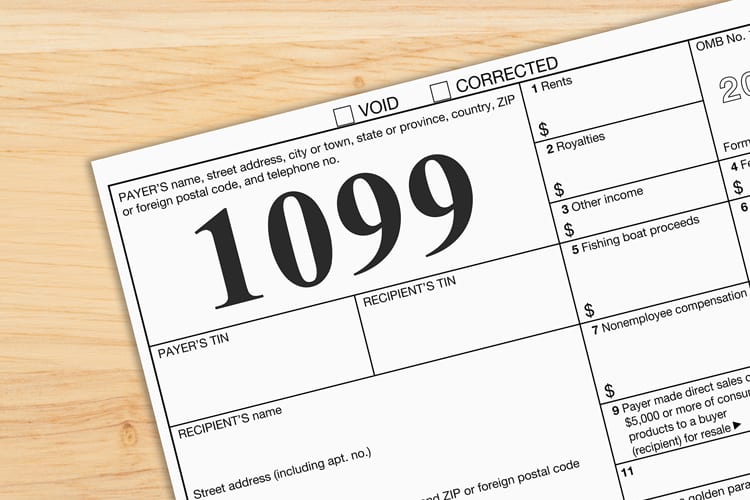What’s a 1099 Form? Here’s What You Should Know

It’s time to file your taxes, but which tax form is the correct document for your employment situation? There’s the 1040, the W-4, the 941, the W-2, and so many more.
If you receive income from self-employment earnings, the 1099 is most likely the tax form you need. Here’s everything you need to know about the 1099 and how to use it properly this tax season.
What is a 1099 Form?
A 1099 form is a series of documents known by the IRS as “information returns.” It’s most commonly used to record the amount of money a client or employee pays to a freelancer, independent contractor, or another type of self-employed worker. However, there are many different types of 1099 forms, some of which are used to report earnings and dividends from investments, government credits, and other types of income.
Different Types of 1099 Forms
Tax forms aren’t known for their simplicity. The IRS uses more than a dozen different 1099 variations, depending on the type and source of income being reported. Here’s a quick overview of the Form 1099s most likely to land in your mailbox during tax season.
1099-A
The IRS considers canceled debt as income. The Form 1099-A is used to document canceled debt that the IRS deems taxable. Most people who receive a Form 1099-A were involved in a short sale of their home or had some or all of their mortgage canceled.
1099-B
A Form 1099-B covers income from the sale of securities. It documents the income received from the sale to make sure you pay the proper taxes on that income.
1099-C
If you negotiated with creditors to settle an existing debt for less than you owed, the IRS may consider the forgiven amount to be taxable. A Form 1099-C will include all of the information you need to know to properly file your taxes.
1099-CAP
1099-Cap forms are sent to taxpayers who receive cash, stock, or other property from shares of a corporation that was acquired or underwent a big change in the capital structure.
1099-DIV
Form 1099-DIV is one of the most common because it reports dividends earned from investments.
1099-G
Tax refunds, tax credits, and unemployment payments are all recorded on the Form 1099-G. This includes state, local, and federal government funds.
1099-INT
Any time that you earn more than $10 in interest from a bank or financial institution, it must be recorded on Form 1099-INT.
1099-MISC
The 1099-MISC encompasses everything not covered in other 1099 categories. For example, income from prizes and awards. In the past, freelancers and other self-employed workers received 1099-MISC documents to report their earnings. Beginning in 2020, however, the IRS wants organizations to use the 1099-NEC for that purpose instead.
1099-NEC
The Form 1099-NEC is now being used for clients and employees to record all income paid to contractors, subcontractors, freelancers, and other non-W-2 workers.
Reporting Income on a 1099
As a taxpayer, you will receive your Form 1099s in the mail from your clients, financial institutions, and other organizations that may need to send you this type of tax document. Use the information provided to calculate your total taxable income as you prepare your tax return.
Read More: Should You Do Your Own Taxes?










